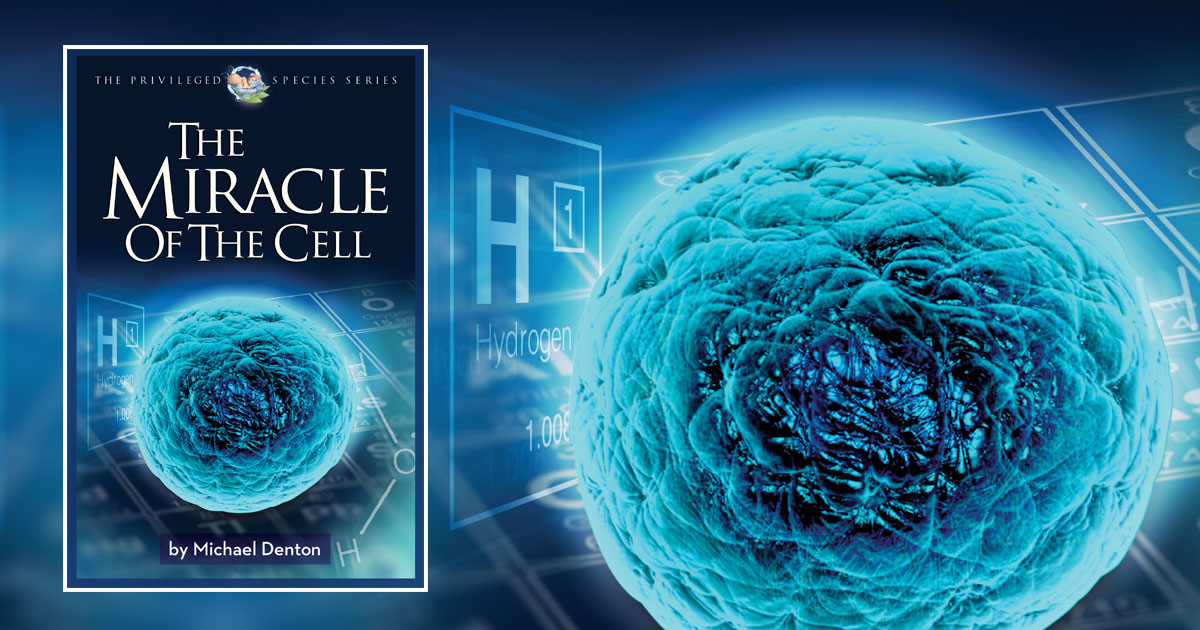 Intelligent Design
Intelligent Design
Learning Wonder from Denton’s Latest

Michael Denton’s new book, The Miracle of the Cell, follows in a long tradition within literature of finding purpose in nature. Aristotle and Plato both indulged in it, and around 50 BC Titus Lucretius Carus wrote a long treatise against both. Lucretius said (translating from the Latin),
In these affairs we crave that thou wilt passionately flee the one offense, and anxiously wilt shun the error of presuming the clear lights of eyes were created that we might see…. All such interpretation is aft-for-fore with inverse reasoning, since naught is born in body so that we may use the same, but birth engenders use… all the members, so meseems, were there before they got their use: and therefore, they could not be gendered for the sake of use.
Seventeen centuries later, Voltaire wrote his own satire, casting Aristotle as a senile Dr. Pangloss: “It has been proved,” said he,
that things cannot be otherwise than they are; for, everything being made for a certain end, the end for which everything is made is necessarily the best end. Observe how noses were made to carry spectacles, and spectacles we have accordingly.
Spectacular Satire
And so began the practice, a skill Charles Darwin raised to high art, of assigning random causes for the appearance of biological form rather than Aristotle’s purpose-driven causes. In the spectacular satire, for example, the obviously designed object — glasses — are assumed to be eternal, and the obviously biological object — nose — is claimed to be designed. By this type of argument, Lucretius and Voltaire and Darwin attempt to convince us that biology cannot possibly be designed. But it would appear the critique is not even skin deep.
If, Denton argues, we insist that the structure is not designed, must we also not insist that the architecture, the girders, the fasteners, the siting, the foundation also be undesigned? Can we insist that a hailstorm that haphazardly removed some shingles has rendered the entire structure randomly arranged? To remove the curse of “biological design” must we not require that randomness is not just skin-deep but down to the bone?
Protoplasmic Goo?
Darwin was well aware of this necessity, and posited that early life was protoplasmic goo — unstructured, unexeptional, pretty much what collects in your kitchen sink trap. Likewise, earlier time periods were less structured and less exceptional than the present. Progress as a rule demands a very boring starting point or else it would be regress.

So Denton’s book starts with the marvels of the carbon atom in the first chapter, and builds chemistry and biochemistry upon that base. By Chapter 5 he is describing the carbon-based ATP turbine that powers every cell on this planet. He shows his training as a chemist by returning to the periodic table in Chapter 6, describing the virtues of metal ion chemistry, and water-soluble chemistry in Chapter 7. In his final chapter, he considers the origin-of-life problem with reference to carbonaceous chondrites — carbon-containing meteorites — which possess complex organic molecules.
Remarkable Design
Thus Denton’s journey into biochemistry and chemistry demonstrates remarkable design in the building blocks of biology. The atoms are arranged into biochemical machines, and the biochemical machines prove to be intricate designs using quantum mechanical tunneling and thermodynamics to efficiently power and protect the cell from death. Nor are these machines inevitable, but highly optimized such that modern engineers are learning to replicate their technology to improve 21st-century machines. For there are many less efficient ways to do the task, but the cell has used the most efficient. Nor can the “trial-and-error” of natural selection explain the optimization process, any more than trial-and-error will convert a Newcomb steam engine into a jet turbine.
In the last chapter I would part company with Denton and insist that meteoritic organics are not “abiotic,” the inevitable result of the laws of physics, but clearly biotic molecules, being both chiral and surrounded by fossilized cyanobacteria, eukaryotic diatoms, and traces of metazoans. I suspect that Denton’s attraction to physicist Paul Davies’s “romantic” view, that the laws of physics contain a module for originating life, has colored his view of organics on meteorites.
Learning Science, Learning Wonder
Furthermore as a physicist, I would love to preface the chapters to the beginning of the book, starting with the pure energy of the Big Bang and the marvel of carbon production through the triple-alpha process, then atheist Sir Fred Hoyle’s confession that the resonances of carbon 12 nucleus were too precise to be accidental, followed by the surprise of quantum mechanics and the sp3 hybridization of the electron orbitals. By the time we get to Denton’s Chapter 1, then, the miracle of carbon has already been established three times over.
Despite my physicist grouchiness, Denton’s book is a delight to read, full of fascinating insights into the chemistry and biochemistry of life. Not only will you learn some science, you may even learn that most important of educational objectives, even more important than facts and dates — wonder. It is the ingredient missing from both Lucretius and Voltaire, which is why Dr. Pangloss could not see his own nose.
